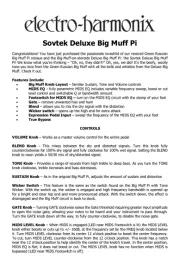Electro Harmonix HOG Handleiding
Bekijk gratis de handleiding van Electro Harmonix HOG (4 pagina’s), behorend tot de categorie Niet gecategoriseerd. Deze gids werd als nuttig beoordeeld door 50 mensen en kreeg gemiddeld 4.4 sterren uit 25.5 reviews. Heb je een vraag over Electro Harmonix HOG of wil je andere gebruikers van dit product iets vragen? Stel een vraag
Pagina 1/4

WARNING: Use only the 9VDC/500mA AC adapter supplied with the HOG. Do not use any other AC adapters. Using other AC
adapters, even those made by Electro-Harmonix, could cause harm to the unit, the adapter or you. The HOG does not use batteries.
DRY OU TPUT
INPU T GAIN
EXP. M ODE
ENVELOPE FILTER
Harmonic Octave Generator – Guitar Synthesizer
Operating Instructions
Congratulations on your purchase of the HOG! The HOG is an Octave and Harmonic Generator/Guitar Synthesizer that
can simultaneously generate multiple octaves and harmonics from your input signal. Whether you play single notes, arpeggios or full
chords, the HOG will track every note you play. In addition, the HOG comes with 7 Expression Modes that enable you to modify your sounds
using a standard Expression Pedal, a MIDI Controller, or the Expression Button on the HOG itself. We have also included an amplitude
Envelope and a 2nd Order low pass Filter with Resonance. You can also purchase the optional EH Foot Controller which will allow you to
store and load 6 presets. In this Instruction Manual, we will refer to all of the generated octaves and harmonics as voices.
Audio Controls
INPUT GAIN Slider — Simultaneously controls the level of the input signal before entering the A/D Converter and the level of the
output signal after the D/A Converter so that Input and Output are always at the same level. The gain before the A/D Converter increases as
the slider is pushed upward. The INPUT GAIN Slider is an analog control and is not saved with the Foot Controller Presets. Ideally, you want
to set the INPUT GAIN slider so that you have maximum signal level at the A/D Converter but does not clip the A/D.
CLIP LED — When the input signal clips the A/D Converter, the CLIP LED will light up. It is best if this LED lights only occasionally on
your loudest notes or not at all.
DRY OUTPUT Slider — Controls the output volume of your original, unaffected DRY signal before it exits the HOG. The DRY OUT-
PUT volume will increase as this slider is pushed upward. This DRY OUTPUT signal bypasses all of the Expression Modes, the Envelope and
the Filter.
INPUT Jack — Connect your instrument’s 1/4" cable to the HOG by inserting it into the INPUT Jack. The Input Impedance presented at
the INPUT Jack is 680 kOhms.

DIRECT OUTPUT Jack — This jack outputs a buffered version of the Input signal. Using this jack will NOT put any additional load
on your instrument. The output impedance at this jack is 400 ohms.
OUTPUT Jack — Connect your amplifier, mixer or computer to this jack using a 1/4" cable. The output impedance at this jack is 400 ohms.
STATUS LED — When the STATUS LED is lit, the HOG is in Effect mode. When the STATUS LED is off, the HOG is in Bypass mode.
BYPASS Footswitch — Press the BYPASS Footswitch to toggle the HOG between Bypass and Effect modes. When you power up the
HOG, it will start up in Bypass mode. If a preset is loaded through the HOG’s Foot Controller and you press the BYPASS Footswitch on the
HOG, it will enter Bypass mode. When you press the BYPASS Footswitch again for Effect mode, it will not load the previously loaded preset
but will instead load the sound that the sliders are currently set to: What You See Is What You Get.
Voice Controls
There are 10 Voice sliders on the HOG. Each features a white cap with a black line and controls the Output volume for its assigned Voice.
-2 OCTAVE Slider — Controls the output volume of the -2 OCTAVES voice, which is 2 octaves below the original input signal.
The -2 OCTAVES signal will be 1/4 the frequency of the input signal. As this slider is pushed upward, the volume of the -2 OCTAVE voice
will increase.
-1 OCTAVE Slider — Controls the output volume of the -1 OCTAVE voice, which is 1 octave below the original input signal.
The -1 OCTAVE signal will be 1/2 the frequency of the input signal. As this slider is pushed upward, the volume of the -1 OCTAVE voice
will increase.
ORIGINAL Slider — Controls the output volume of the ORIGINAL voice. This voice is your Dry signal; the difference between the
ORIGINAL voice and the DRY OUTPUT is that the Original voice goes through the Expression Modes, Envelope and Filter, so it is treated just
like all other voices. The volume of the ORIGINAL voice will increase as this slider is pushed upward.
+5TH Slider — Controls the output volume of the +5TH voice. The pitch of this voice is a perfect 5th note above the original input
note. For example if you play an A note, the HOG will output the first E note above the A. The +5TH signal will be 1.5 times the frequency
of the input signal. The volume of the +5TH voice will increase as this slider is pushed upward.
+1 OCTAVE Slider — Controls the output volume of the +1 OCTAVE voice, which is 1 octave above the original input signal. The
+1 OCTAVE signal will be twice the frequency of the original input signal. As this slider is pushed upward, the volume of the +1 OCTAVE
signal will increase.
+1 OCTAVE +5TH Slider — Controls the output volume of the +1 OCTAVE +5TH voice. The pitch of this voice is a perfect 5th note
above the first octave above the original input note. For example if you play an A note, the HOG will output an E note one octave higher
than the +5TH slider's E note. The +1 OCTAVE +5TH signal will be 3 times the frequency of the input signal. The volume of the +1 OCTAVE
+5TH voice will increase as this slider is pushed upward.
+2 OCTAVES Slider — Controls the output volume of the +2 OCTAVES voice, which is 2 octaves above the original input signal. The
+2 OCTAVES signal will be 4 times the frequency of the original input signal. As this slider is pushed upward, the volume of the +2 OCTAVES
signal will increase.
+2 OCTAVES +3RD Slider — Controls the output volume of the +2 OCTAVES +3RD voice. The pitch of this voice is a major 3rd
note above the second octave above the original input note. For example if you play an A note, the HOG will output a C# note over two
octaves above the input. The +2 OCTAVES +3RD signal will be 5 times the frequency of the input signal. The volume of the +2 OCTAVES
+3RD voice will increase as this slider is pushed upward.
+3 OCTAVES Slider — Controls the output volume of the +3 OCTAVES voice, which is 3 octaves above the original input signal. The
+3 OCTAVES signal will be 8 times the frequency of the original input signal. As this slider is pushed upward, the volume of the +3 OCTAVES
signal will increase.
+4 OCTAVES Slider — Controls the output volume of the +4 OCTAVES voice, which is 4 octaves above the original input signal.
The +4 OCTAVES signal will be 16 times the frequency of the original input signal. As this slider is pushed upward, the volume of the +4
OCTAVES signal will increase.
SPECTRAL GATE Button and LED — When the SPECTRAL GATE LED is lit, the Spectral Gate function is active and in the signal
path. Press the SPECTRAL GATE Button to toggle this function On/Off. The Spectral Gate emphasizes the loudest frequency or harmonic
and reduces the volumes of all other present frequencies and harmonics. Use the Spectral Gate to produce new interesting sounds at the
touch of a button.

Envelope and Filter Controls
ENVELOPE LOWER UPPER& Sliders — The Envelope sliders control the amplitude Attack or Decay of the Voices. The
LOWER slider controls the lower 5 voices (-2 Octaves to +1 Octave); the UPPER slider controls the upper 5 voices (+1 Octave +5th to
+4 Octaves).
The Envelope sliders have a center-detent; they click into place at the center of their travel. When set to the center-detent, there is no
change to the voices’ envelope: you have an instantaneous Attack and an infinite Decay. As you push the sliders up from the center, the
rate of Decay increases until the notes are barely audible. As you push the slider down from the center, the rate of Attack increases so that
your notes slowly fade-in.
ENVELOPE ON LED — Indicates when the Envelope section is in or out of the signal path. When the LED is lit, the Envelope is On
and in the signal path, when the LED is off, the Envelope is bypassed.
ENVELOPE Footswitch — Toggles the Envelope section ON / OFF.
FILTER FREQUENCY Slider — Controls the cutoff or peak frequency of the Low Pass Filter. As the FREQUENCY slider is pushed
upward, the cutoff frequency of the filter rises. This is a 2nd-Order filter.
FILTER RESONANCE Slider — Controls the Q or peak of the Filter. As the RESONANCE slider is pushed upward, the filter
emphasizes the cutoff Frequency more, creating an audible peak at the setting of the FREQUENCY slider.
All of the generated voices go through the Filter at all times. If you do not want to hear the effects of the filter, move the FREQUENCY slider
to its top position and the RESONANCE slider down to its bottom position.
Expression Controls
EXP. MODE Switch and LEDs — The HOG has 7 different Expression modes, this switch consecutively selects a mode, starting
with BEND 1 OCTAVE and ending with FILTER and then back to the BEND 1 OCTAVE setting. Each Expression Mode has it own LED which
lights up when the mode is selected. The 7 Expression Mode LEDs form a semi-circle around the EXPRESSION MODE Switch.
EXP. REVERSE Switch and LED — This switch reverses the direction of the Expression Mode currently selected. For example
with the EXP. REVERSE LED off, in BEND 1 OCTAVE mode, as you move the expression pedal from toe up to toe down, the pitch of the voices
will continuously rise until you hit 1 octave above. If you hit the EXP. RE RVE SE Switch and its LED lights up, as you move from toe up to toe
down, the pitch of the voices will continuously fall until you hit 1 octave below.
EXP. BUTTON Footswitch — This momentary footswitch enables you to take advantage of the 7 Expression Modes without
needing an Expression Pedal. Pushing down on the EXP. BUTTON is equivalent to the toe down position of the Expression Pedal. Taking
your foot off of the EXP. BUTTON is equivalent to the toe up position of the Expression Pedal.
The 7 Expression Modes are as follows (all descriptions assume you are using an Expression Pedal):
BEND 1 OCTAVE —Continuously bends all of the generated voices up to 1 Octave UP (or DOWN with EXP. REVERSE LED ON). This
is similar to using the whammy bar on a guitar or pitch bend wheel on a synthesizer. You can use this effect to obtain intervals that are
between the original note, the perfect 5th and the octave, for example, you can set the expression pedal to obtain a major 6th interval.
BEND 1 STEP —Continuously bends all of the generated voices up to 1 Step UP (or DOWN with EXP. REVERSE LED ON). Same effect
as BEND 1 OCTAVE except the range is limited to just 1 step or the major 2nd interval. You can bend from an A note to a B note.
VOLUME —Continuously varies the volume of the generated voices. As you move the pedal from toe up to toe down, the volume will
increase from 0 to 100% (or 100% to 0 with EXP. REVERSE LED ON).
FREEZE + GLISS —The Freeze + Gliss function is a new expression mode that works a little differently from the other modes. When
the toe is up, you can play your instrument normally. When the toe is down, the HOG will freeze whatever notes you were playing at the
time of pushing the Expression pedal down. You can then play over these notes. In between toe up and toe down, the HOG will slide to the
new note you play, from the previous note you played. The speed of the glissando is determined by the position of the Expression pedal,
the closer the Expression pedal is to toe down, the slower the slide speed will be. For example, if you play an A note and then move the
Expression Pedal down to 50%, it will freeze the A note. If you then play an E note, the HOG will slide up to the E note. This function is
similar to portamento on a synthesizer. Freeze + Gliss is a very tricky mode, it takes some time to master it. It can be frustrating at first but
once you get it, it will open new doors to how you play guitar.
Please note: Moving the Expression Pedal to the toe up position erases the frozen note in memory.
Product specificaties
| Merk: | Electro Harmonix |
| Categorie: | Niet gecategoriseerd |
| Model: | HOG |
Heb je hulp nodig?
Als je hulp nodig hebt met Electro Harmonix HOG stel dan hieronder een vraag en andere gebruikers zullen je antwoorden
Handleiding Niet gecategoriseerd Electro Harmonix

15 Mei 2025

2 April 2025

1 April 2025

4 December 2024

16 November 2024

16 November 2024

16 November 2024

16 November 2024

12 November 2024
Handleiding Niet gecategoriseerd
- Heckler & Koch
- Salta
- AudioQuest
- Backyard Pro
- Elsner
- ALC
- Mistral
- Louroe Electronics
- Atika
- Pentatech
- Motion
- Medeli
- Blodgett
- Lamax
- Crosley
Nieuwste handleidingen voor Niet gecategoriseerd
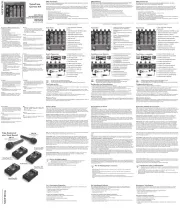
2 Augustus 2025
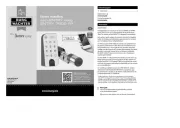
2 Augustus 2025
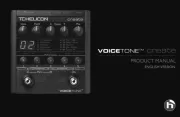
2 Augustus 2025
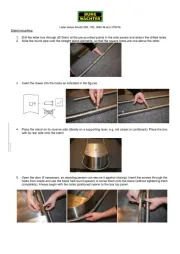
2 Augustus 2025
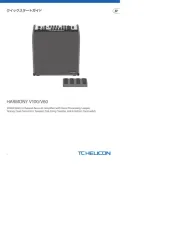
2 Augustus 2025
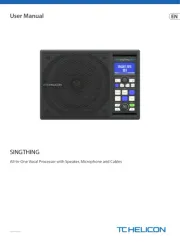
2 Augustus 2025
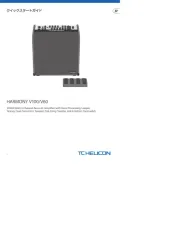
2 Augustus 2025
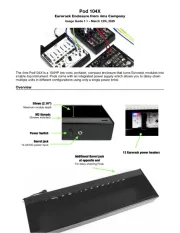
2 Augustus 2025

2 Augustus 2025
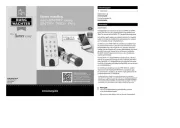
2 Augustus 2025
